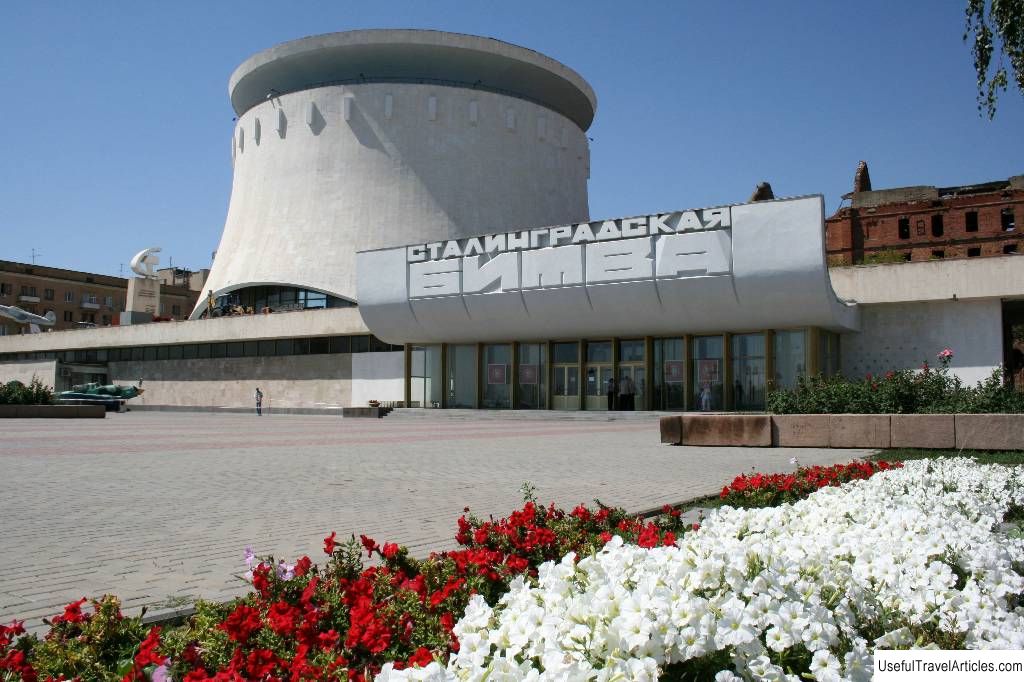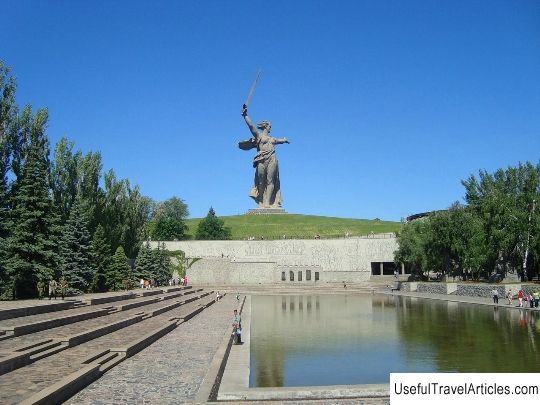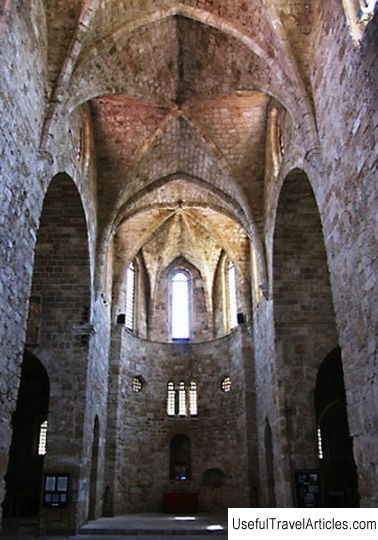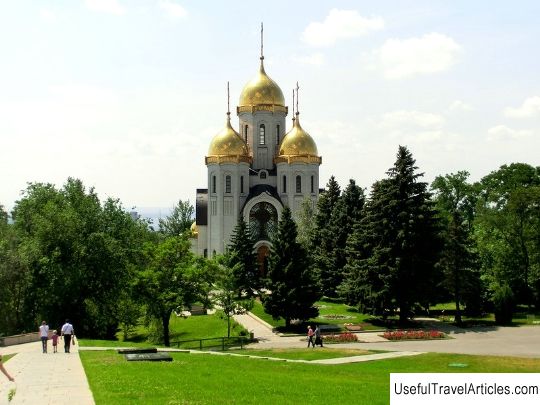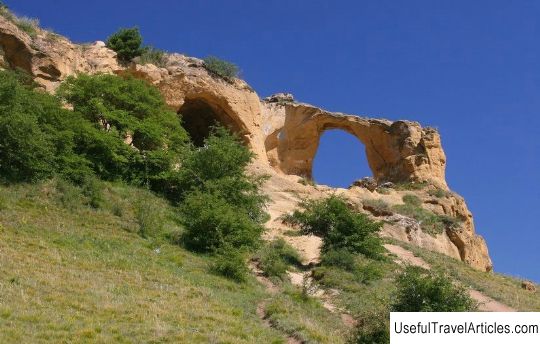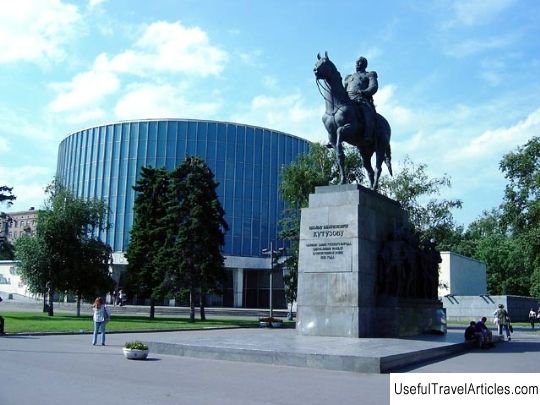Museum-panorama ”Battle of Stalingrad” description and photos - Russia - South: Volgograd
Rating: 8,7/10 (3495 votes) Museum-panorama "Battle of Stalingrad" description and photos - Russia - South: Volgograd. Detailed information about the attraction. Description, photos and a map showing the nearest significant objects. Photo and descriptionOne of the main attractions of modern Volgograd is the panorama museum "Battle of Stalingrad". This is the largest battle panorama in Russia, telling about the turning point of the Great Patriotic War - the Battle of Stalingrad. Battle of StalingradThe battle of Stalingrad was predetermined by Hitler's decision in April 1942. The Wehrmacht generals wanted to continue the offensive against Moscow, but the Fuehrer personally approved the so-called " Blue Option ", which assumes the main attack in the south. The target of the Nazis was the oil fields . The German command planned to obtain additional sources of oil, thereby depriving the Soviet Union of fuel. Moreover, according to this plan, the city of Stalingrad should have been blockaded - the storming of the city was not originally planned. The German offensive began June 28, 1942 . Having inflicted a defeat on the Red Army near Kharkov, the Wehrmacht developed an offensive in the steppe, where the Soviet troops did not have prepared lines for defense. On July 28, Stalin issued the famous order No. 227 "Not a step back!" The situation was recognized as critical. In August, Soviet troops were thrown back to the Volga and the Caucasus. On July 23, 1942, the Wehrmacht command adopted a directive, according to which the advancing German troops were divided into two parts. Army Group A was to capture the Caucasus. Army Group B, commanded by Colonel General M. Weichs , struck at Stalingrad. Colonel-General Paulus 's 6th Army was assigned directly to capture the city. He was opposed by the former Soviet South-Western Front, renamed Stalingrad. He took up defense on flat terrain with a length of 500 kilometers, while almost twice inferior to the Germans in terms of the number of troops. By August 23, the advanced units of the Wehrmacht reached the Volga. On this day, the 4th air fleet of the Nazis, under the command of Wolfram von Richthofen struck the city with all its might. German pilots made about 2 thousand sorties per day, destroying many city blocks and oil storage facilities, from which burning oil flowed to the Volga. About 90 thousand civilians were killed, almost half of the houses in the city were turned into ruins.
October 14 the most fierce, third assault on the rebellious city began. Soviet troops held a thin strip along the banks of the Volga. Mamayev Kurgan was almost entirely occupied by the Germans, on its eastern slope our soldiers fought off several enemy attacks a day. The fighting continued for a whole month, the Germans captured the tractor plant, cutting off the northern grouping of the Soviet 62nd Army, but destroying or pushing back the units defending Stalingrad beyond the Volga, failed. November 11 the last, fourth assault began. The Germans reached the Volga on a half-kilometer-long section; by that time, Soviet troops were defending only three bridgeheads in the city. But the Nazis were unable to destroy them and the offensive stopped. November 19 the Soviet offensive began, and the Germans were blocked in the city. Hitler ordered Paulus to hold the city at any cost, promising to release the encircled troops with a strike from the west. However, this breakthrough failed, the Soviet armies held back the onslaught of the tank divisions of G. Goth and E. von Manstein, after which they threw them back 150 -200 km. The position of the encircled group of Paulus became hopeless. After the ultimatum on January 8, 1943, which Paulus ignored, the operation began to defeat the remaining German troops in Stalingrad. On January 26, the Soviet armies, advancing from both sides, united near the Mamayev Kurgan. It was the events of this day that became the basis for the grandiose battle canvas - the panorama "The Defeat of the Nazi Troops at Stalingrad." History of the Museum The panorama museum began to be created on a historical site - where in September 1942 the Soviet 13th Infantry Division landed on the banks of the Volga. The construction was inaugurated on February 2, 1968 , 25 years after the Battle of Stalingrad. The exposition was opened in several stages and the most famous artists and designers worked on them. The building of the panorama has the shape of a rotunda; it was built according to the project of architects V. Maslyaev and E. Temnikov . The exposition of the museum was opened in stages and was finally completed by the 40th anniversary of the Victory. The main and main exhibit is a huge panorama "The defeat of the Nazi troops at Stalingrad", made in the tradition of classical panoramas by F. Roubaud . The idea of creating such a panorama arose long before the opening of the museum. The first large battle canvas was dedicated to the events of September 1942 - the first storming of the city. The panorama, telling about the battles for the Mamayev Kurgan in 1943, was created from 1948 to 1950. The Moscow battle painting studio worked on this panorama. The head of the group of artists who created this canvas was A. Gorpenko . The panorama was collapsible - it could be displayed in different rooms. It was first shown in Moscow in 1950, and then went to Stalingrad, and was placed in the building of the Pobeda cinema. Even then, it was clear that a separate building had to be built for the grandiose panorama, and the panorama itself had to be finalized. A special pavilion was built on the top of Mamayev Kurgan for shooting the area and drawing from life. Like F. Roubaud once, the artists - the authors of the panorama - studied plans and drawings, communicated with the participants in the battle and the military command, participated in parades and maneuvers. The sketch for the new panorama was completed by 1961. The huge canvas was woven at the Krasny Oktyabr plant, its area was almost two thousand square meters. The panorama was finally completed in 1982 . Seven artists worked on the final version of the panorama: P.I. Zhigimont, F.P.Usypenko, M.I.Samsonov, G.I. Marchenko , P. T. Maltsev, V. K. Dmitrievsky and N. Ya. Booth . The painting has become the largest battle painting in the USSR. The viewer of the panorama is at the top of the Mamayev Kurgan, from where all the surroundings are visible. The plot itself is the events of January 26, but before us is a work of art, and not an exact reproduction of events. Artists show all the feats that were performed during the battles for Stalingrad : we see nurse Anna Besschastnova pulling a wounded man from the battlefield, Mikhail Panikakha throwing himself under an enemy tank, & nbsp; Nikolai Serdyukov, covering the embrasure ... The museum exposition is located in eight halls . The design here is made of gray granite, concrete and metal and seems to take the viewer back in time. In addition to the most circular panorama, there are dioramas - for example, models of a dugout, a command post and an interactive installation “model of a destroyed city”, as well as personal unique relics of the city's defenders. One of the most famous exhibits is the precious sword presented to Stalingrad by King George VI of Great Britain . The museum contains Soviet and German weapons, military uniforms and insignia, many photographs and documents. The exposition is hung with the Triumphal Hall, on the walls of which there are battle banners and the names of the units that participated in the liberation of Stalingrad are indicated. There are several colorful dioramas dedicated to the stages of the battle for the city: the beginning of the battle; the crossing of the 13th Guards Division across the Volga, the defeat of Manstein's group in December 1942 and the capture of the airfield. In front of the panorama building there is a exhibition of military equipment from the Great Patriotic War . On the pedestal is a model of a Su-2 bomber, and under it are tanks and self-propelled artillery mounts of various models. Not far from the museum are the ruins of the Grudinin mill. This is a 1904 building. Once there was a steam mill. It was named after the revolution after the name of the secretary of the communist cell who died in 1922. The mill worked until 1942, until it was destroyed in a bombing in September. There is a marble in the courtyard of the museum bust of Marshal Georgy Zhukov - it was installed here in 1996 to the centenary of the commander. The author is the Volgograd sculptor V.G. Fetisov.            We also recommend reading National Historical Museum of the Republic of Belarus description and photos - Belarus: Minsk Topic: Museum-panorama ”Battle of Stalingrad” description and photos - Russia - South: Volgograd. |

